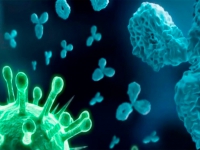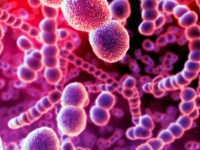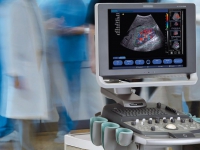Trichomoniasis is the most common infection, transmitted mainly through sexual contact. Known in medicine from 1836-1838. In recent years, there has been a significant increase in the number of diseases caused by trichomonads, which occur most often as mixed infections with Gonorrhoea, Chlamydia, candidiasis, HPV hcr, HSV2 viruses, where trichomonas acts as a reservoir for the preservation of various pathogens / TANK function/acute and chronic inflammatory diseases the urogenital organs of men and women and their complications leading to reproductive disorders, erectile dysfunction, and tumor diseases/prostate hyperplasia, prostate cancer, fibroids, endometrial hyperplasia, dysplasia and cervical cancer / in association with HPV hcr /. Also, trichomoniasis increases the risk of HIV infection through an increase in susceptibility to HIV infection.
The incidence of genitourinary trichomoniasis reaches 30-50% / depends on the diagnostic methods used and the contingent being examined /.
The main diagnostic methods for genitourinary trichomoniasis are:
- Native smear
- Painted Smear
- Bacteriological methods, in particular, sperm culture on "In Pouch TV" medium of the company ВіоМед diagnostics, Inc, USA / with detectability up to 50-70% /
- RIF, ELISA, PCR / from 12 to 18 days of the menstrual cycle /.
In the diagnosis of genitourinary trichomoniasis, an important place is occupied by indirect signs of the presence of infection:
- The presence of mucus in smears or urine/living trichomonads is visible as whole cells and the dead turn into cloud-like formations identified as mucus.
- Increased white blood cell count
- in smears, urine, sperm / more than 5 in p / vision /
- in the secret of the prostate gland / more than 10 in p / vision /
- gynecological smears / more than 20-30 in p / vision /
- T2, T3 - the type of cytology of female smears
- The absence or insignificant amount of lactobacilli in gynecological smears.
- Reduction in the number of lecithin grains in the secretion of the prostate gland
- A decrease in the amount of fructose in semen and, as a result, sperm motility
None of the diagnostic methods guarantee the complete detection of Trichomonas vaginalis. A negative result of any examination does not mean the absence of Trichomonas. To increase detectability, repeated examinations are required by all available methods, using various provocations / often food/beer, spicy, salty, canned food /.
Genitourinary trichomoniasis in men manifests itself in the form of the following diseases, which can occur in acute, subacute, torpid, chronic form, or the form of asymptomatic / more often in men than in women/trichomonas:
- Balanitis, balanoposthitis
- Prostatitis, vesiculitis, cowperitis
- Epididymitis
- Cystitis, pyelonephritis
- Excretory toxic infertility
- Erectile Dysfunction
- Tumor diseases of the prostate / prostatic hyperplasia, prostate cancer /
The abundant reproduction of polymorphic opportunistic bacterial flora is an indirect diagnostic sign of latent trichomoniasis.
Genitourinary trichomoniasis in women manifests itself in the form of the following diseases:
- Colpitis, vulvitis, vestibulitis, bartholinitis
- Cervicitis, endocervicitis, endometritis
- Urethritis, paraurethritis, skineitis
- Cystitis, pyelonephritis
- Salpingitis, adnexitis
- Erosion, dysplasia / in association with HPV hcr / cervix, with a possible transition to cervical cancer.
In addition to all of the above, trichomoniasis can stimulate the development of urolithiasis.
Quite often, Tr.vag causes chronic conjunctivitis, gingivitis with periodontitis, pharyngitis, and tonsillitis.
Genitourinary trichomoniasis is transmitted through open sexual contacts / more often /, during non-sexual transmission / less often /, during childbirth for girls / up to 20-25% /, when using common areas / in case of hygiene.
A reliable method for the treatment of genitourinary trichomoniasis currently does not exist due to the widespread use of multiresistant strains over the past 50-60 years.
The ability of Trichomonas to self-preservation is also unique, through the mechanism of budding of part of the cytoplasm, phagocytosis of newly formed individuals and their experience in macrophage phagosomes. This can explain the recurrence of trichomonas infection in patients after treatment with nitroimidazole drugs/metronidazole, secnidazole, etc. /
Therapy of trichomoniasis is difficult and more effective in the treatment of fresh infection / up to 2 months /, and much less effective in the treatment of chronic / more than 2 months/infection.
The doctor's task in the treatment of genitourinary trichomoniasis is to achieve long-term clinical remission, followed by the patient following the regimen of "non-provocation" of exacerbation of chronic infection / i.e. reducing local or systemic immunity and, thus, stimulating the multiplication of Trichomonas:
- exclusions of alcoholic and non-alcoholic carbonated drinks
- the exception of spicy, salty, pickled and bitter foods








